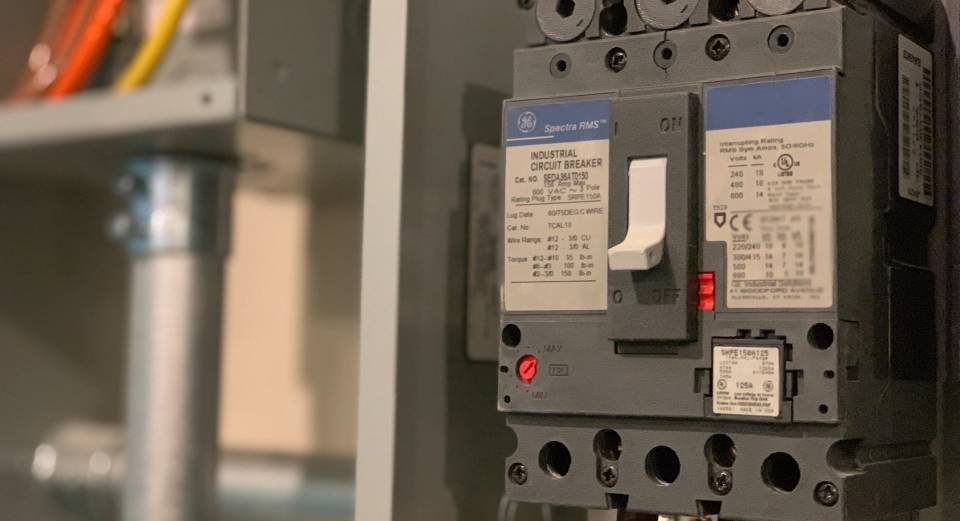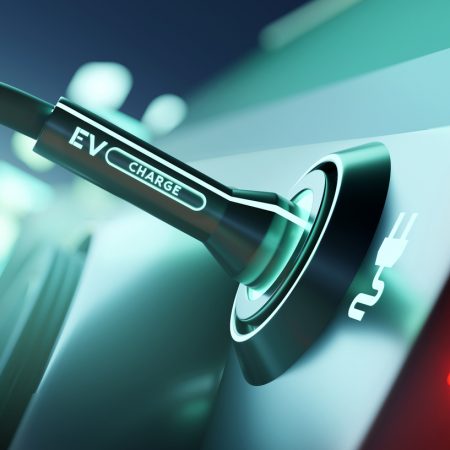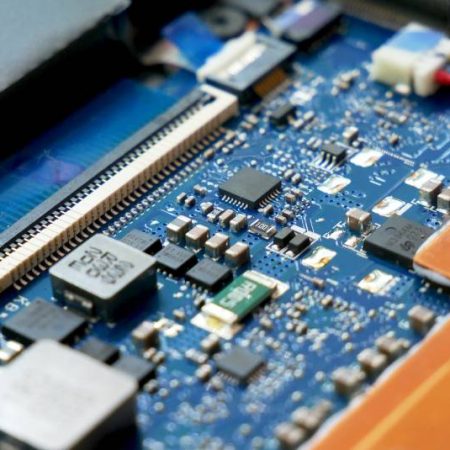What is a Circuit Breaker and Why Is It Important?
Circuit breakers surround us in our daily lives. At home, at work, in electric vehicles, and in our infrastructure, these electrical switches stand ready to protect electrical systems should an overload or short circuit occur. And although most of us go about our lives without thinking about the everyday applications of circuit breakers, they are essential to supporting everything from our most mundane activities to our grandest projects.
As demand for electricity grows and electrical systems expand, circuit breakers are becoming even more important than ever before. And technological innovation is delivering new, better components that offer promises of energy efficiency.
What is a circuit breaker?
A circuit breaker is an electrical switch designed to automatically open a circuit to prevent damage to components, overheating, and fires should an overload or short circuit occur. This is sometimes called overcurrent protection.
Circuit breakers effectively do the same thing as a fuse, however, they can be used repeatedly. Fuses are single-use items that need to be replaced after a system overloads. Because circuit breakers are switches, they can simply be reset.
How does a circuit breaker work?
When an excess amount of electricity passes through a circuit breaker (known as a fault condition or fault current), the breaker automatically opens to sever the circuit and prevent the flow of electricity from continuing.
Precisely how a circuit breaker achieves this depends on what type it is. Traditional mechanical circuit breakers (think of the ones in your circuit breaker box at home) are physical switches that flip to open and must physically close again for electricity to flow.
Solid-state circuit breakers instead use power semiconductors (such as Ideal Power’s Bidirectional Bipolar Junction Transistor, or B-TRAN®) to quickly open a circuit without any physical moving parts. This reduces wear and tear and could enable a longer lifetime value.
Want to learn more? Read the whitepaper to learn more about B-TRAN™ devices in solid-state circuit breaker applications.
Whatever method is employed, the end goal is for the circuit breaker to open the circuit and then manage the current without overheating.
Types of circuit breakers
There are many different types of circuit breakers with varying intended applications. Some are designed for low-voltage use in residential or small commercial settings, while other circuit breakers are designed for industrial applications or large infrastructure systems. To identify which type you are looking at, you can typically identify a circuit breaker symbol that makes it clear the intended use of the circuit breaker.
This non-exhaustive list identifies some of the types of circuit breakers you might encounter.
Single pole circuit breakers
An example of something you might find in your circuit breaker box at home is the single-pole circuit breaker, which is designed for low voltage appliances like your dishwasher or refrigerator. These circuit breakers typically provide 120 volts of power to the circuit and can handle 15 to 30 amps.
Double pole circuit breakers
Double pole circuit breakers might also be found in your circuit breaker box at home. These components feature two wires that connect to a single wire that trips the breaker if either side of the pole is overloaded. These breakers offer 240 volts of power, as they are effectively two single pole circuit breakers combined into one component.
Solid-state circuit breakers
The solid-state circuit breaker, which has no moving parts, is not subject to the same wear and tear as traditional mechanical circuit breakers. They also close more quickly, enabling faster protection of downstream components. Unfortunately, adoption of these longer-lasting, more reliable circuit breakers remains low because they have historically faced efficiency drawbacks due to comparatively high conduction losses. This is largely due to the widespread use of Insulated-Gate Bipolar Transistor (IGBT) semiconductors most solid-state circuit breakers rely upon. That’s the problem Ideal Power’s B-TRAN® semiconductor is intended to solve.
Arc fault circuit interrupters
Arc fault circuit interrupters (AFCI) are designed specifically to detect different types of arcing electrical faults and extinguish the arc and reduce the risk of a fire due to overheating. When the fault current is interrupted, an electrical arc is also produced; the arc must be interrupted lest it damages components in the breaker. To do so, there are a number of methods that could be employed, such as compressed air, gas, or vacuums. Which method is applied depends on the voltage required for your chosen application.
Ground fault circuit interrupters
Ground fault circuit interrupters (GFCI) are designed to address a fault related to the low-resistance grounding path of a system. GFCI circuit breakers are designed to quickly shut off power when a ground fault is detected. It should open the circuit within 1/40 of a second, according to the Occupational Safety and Health Administration (OSHA), typically as soon as the faulty device is plugged in. It also serves to prevent overheating and fires related to ground faults.
High voltage industrial circuit breakers
The types of circuit breakers intended for industrial applications, such as managing the energy collected at a solar panel farm or the electricity needed to power electric vehicle chargers through an EVG, handle power orders of magnitude greater than single pole circuit breakers. For example, high voltage industrial circuit breakers are used when more than 72.5kV are needed.
Direct current vs. alternating current circuit breakers
It’s worth noting that direct current and alternating current circuit breakers will only work with their respective systems. DC circuit breakers cannot be used with an AC circuit. Similarly, AC circuit breakers will not work with a DC circuit.
What are circuit breakers found in?
Circuit breakers can be found in everything from the electrical system in your home to electric vehicle grids (EVG) to wind turbine facilities. The many different types of circuit breakers are a result of the vast number of applications these useful components support. Without these electrical switches, you wouldn’t be able to make your morning cup of coffee and humans wouldn’t have been able to set foot on the moon.
How to choose a circuit breaker
To choose a circuit breaker, you need to understand its specifications. The major factors you should consider are:
- Voltage rating: The voltage rating is the highest possible voltage that can be applied across the circuit breaker. It’s important to understand how much voltage your intended application requires and choose a circuit breaker with a voltage capacity that can handle it.
- Continuous current rating: To know the continuous current rating, identify the amperes. The ampere rating tells you how much continuous current a circuit breaker can take without overheating.
- Frequency: To determine the frequency your circuit breaker can handle, consider the amps. For example, circuit breakers of 600 amps are capable of handling frequencies of 50 to 120 Hertz. Choosing the wrong one can result in lost energy and increased heat, reducing efficiency and potentially damaging components.
- Max interrupting capacity: A circuit breaker’s max interrupting capacity must always be higher or equal to the fault current that triggers the breaker to open. Otherwise, the circuit breaker could be damaged.
Circuit breakers continue to improve
As our technology improves, so too do our circuit breakers. That’s fortunate too, because our demand for electricity is ever-growing. From the rise of massive new industries like electric vehicles and renewable energy to the development of previously non-industrialized regions of the world, the need for electrical systems and circuit breakers isn’t going anywhere anytime soon. That’s why Ideal Power is focused on developing its B-TRAN® semiconductor to support the more efficient functioning of solid-state circuit breakers. Driving energy efficiency and electrical system safety forward is not just important, it’s become critical to society in ways large and small.







